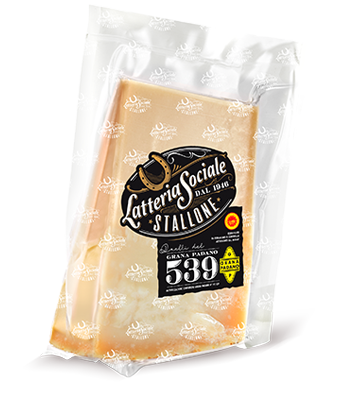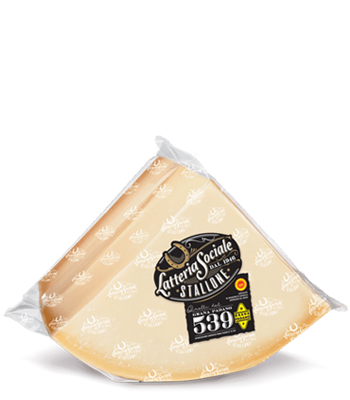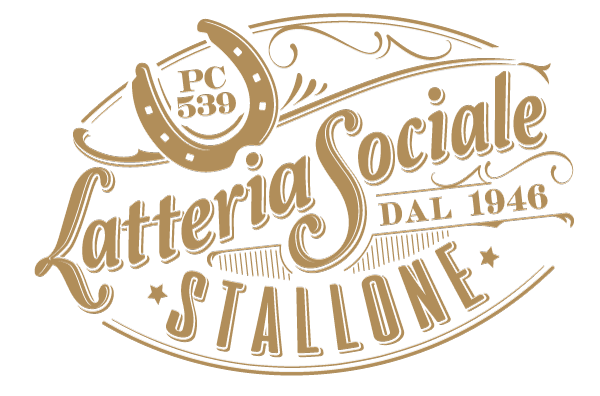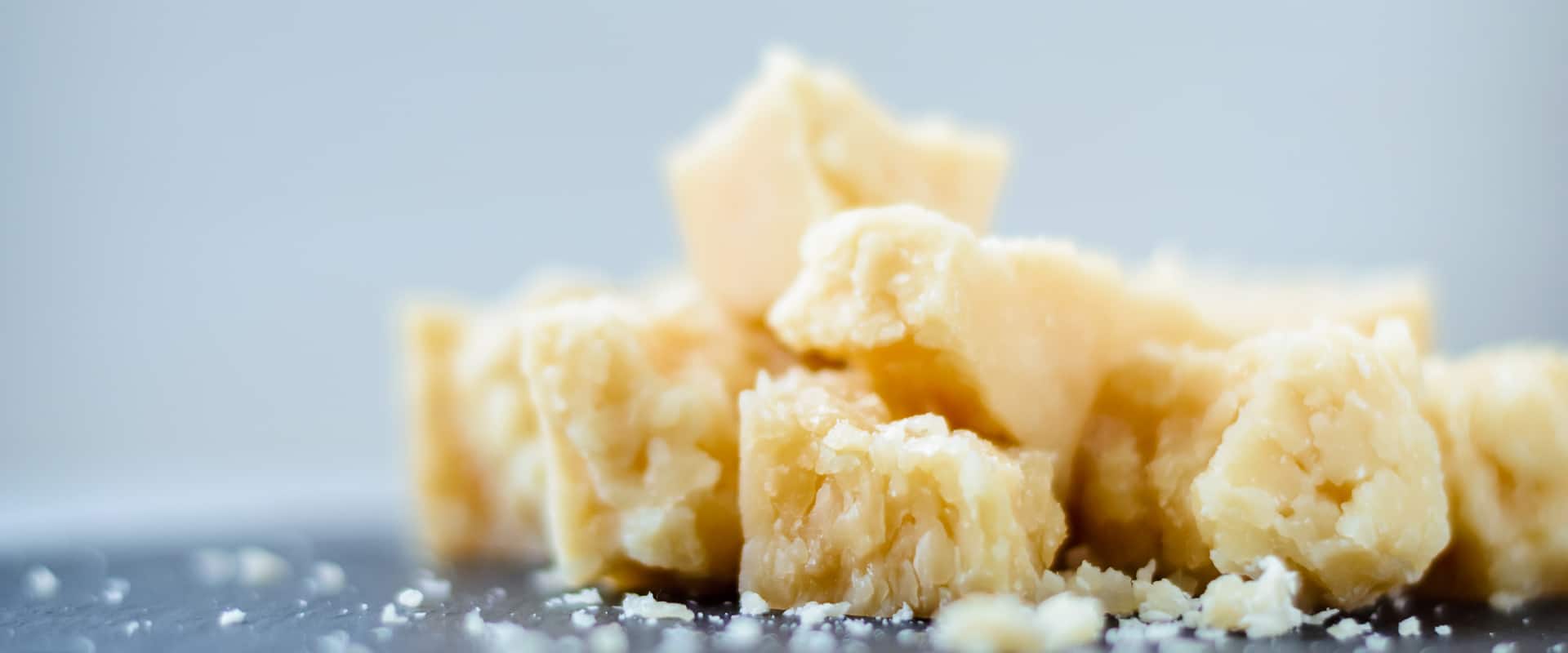
Grana Padano
Every day, 350 quintals of milk arrive at the Latteria Sociale Stallone, from the consortium’s 11 contributing members.
Every morning after milking, the milk is collected by refrigerated tankers.
On arrival at the plant, the milk is transferred to storage tanks, where it remains for about seven hours in order to allow the cream to rise to the surface.
This is then separated from the milk and used for the production of butter. The rest of the milk is used for the production of Grana Padano cheese.
Every day, the Latteria Sociale Stallone produces 62/64 wheels of Grana Padano Dop, that are added to the 26,000 wheels slowly maturing in storerooms before being put on the market.
Did you know?
Grana Padano is a DOP cheese that, as required by the Production Regulations, must be made from raw cows’ milk, coming from no more than two daily milkings and produced only in dairies authorized by CSQA (the sole entity for the certification of Grana Padano cheese).
The Production
The current production technique involves the use of raw cow’s milk obtained from two milkings, which is allowed to stand 17-18 hours, in order to partially skim it. The processing includes a long series of operations, starting with the coagulation and the breaking of the curd, followed by steam cooking in large copper boilers and ending with the extraction of the mass (wrapped in muslin cloth), which is bound and placed in the mould from which it obtains its typical shape.
The moulds bear the trademark of the Consortium and the number of the producing dairy.
After being left for three days on large wooden tables, the cheese is then placed in brine for salting, where it remains for thirty days. At the end of this process, the maturing begins, ranging from a minimum of 12 months up to 3 years for the wheels weighing around 30 kilograms.
Grana Padano has unique characteristics: it is sweet, compact to the cut, has a uniform colour and is free of holes. Finally, the rind must be thin, between 4 and 8 mm.
Grana Padano is one of the undisputed stars of the Piacentine culinary culture whether flaked, grated or cut into small chunks, alone or in a wide variety of combinations ranging from appetizers to desserts. Grana is also an essential ingredient in the preparation of “anolini“, one of the most popular dishes of the Piacentine tradition.

Grana Padano 539
The Procedure
Until a few years ago, semi-skimmed milk was poured into copper cauldrons inside which it was constantly agitated by a roller; next came the cooking stage, during which bundles of wood were gradually added under the cauldron to stoke up the fire so as to reach a temperature of 50-52°C (preferably 50 when the cheese making milk was sour and thin). During this operation, the fire was so hot that often it singed the shirts of the sotcaldéra, the assistants who carried out the most menial and strenuous tasks in the dairy.
The operation of extracting the curd, which had deposited on the bottom, was carried out using a cloth and was quite laborious. Once extracted, the wheel was placed in a large bucket, where it remained for about half an hour (one hour maximum) in order to allow the hot whey, with which it was saturated, to drain. The wheel, still wrapped in the cloth, was then put into the “fascera” (mould), a high-sided circle of wood, equipped with a stout rope that enabled it to be made narrower or wider as necessary.
For a wheel obtained from about 5-6 quintals of milk the mould was 22 centimetres high and double that in diameter.
A good mature grana cheese had a granular structure, was easy to break and grate and was full of little holes or eyes, known as “vacui”, scattered evenly throughout. Its bouquet was pleasant and aromatic, its colour a light yellow, and its flavour intense and spicy, but not excessively so.
To cut it, or rather, to split it, required a short, sturdy, double-edged knife so as to reveal the granular structure. There were cheeses weighing from 20 to 80 kilograms on the market; the biggest were the most popular, providing they were perfect. The wheels were cylindrical, with convex sides; they tried to maintain a certain ratio between the height and the diameter, so that the former was a little more than a third of the latter.
Did you Know?

The cheeses of Piacenza are called ‘Parmesan’ by some because in Parma they produce a similar cheese, not too different in quality.” This statement of Pantaleone Da Confienza contained in the Summa lacticiniorum, should be enough to end a long-standing dispute between the territories of the Duchy. .
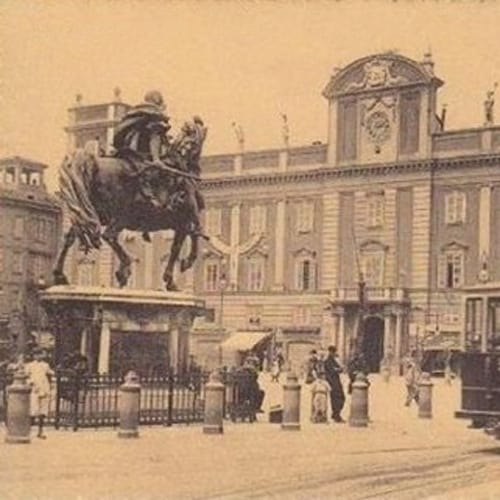
The Piacentine cheese was also at the centre of attempts at diplomatic corruption, as recounted by Ortensio Landi in Sere stentato, in which he described the proposal put to Pope Leo X to send a hundred “piasentino” (Piacentine) cheeses to bribe Luther and his protectors.
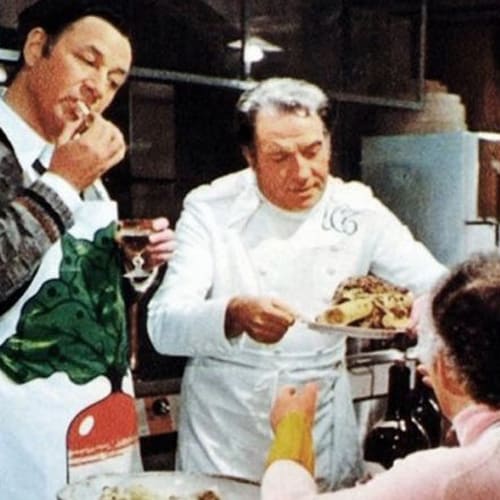
In 1500 Count Giulio Landiof Piacenza wrote an ode to accompany a “piasentino” cheese sent as a gift to Cardinal Ippolito de’ Medici. In it he celebrated the Most Serene King of Virtue (the grana cheese), explaining why the “piasentini” were the best: the most beautiful cows, the best grass, the finest salt, and cheese makers who were artists.

In the film Marcello Mastroianni, an areoplane pilot, took a whole wheel of Grana Padano into first class for his friends – not allowing the flight attendants to touch it – treating it as if it were something highly precious. Ugo Tognazzi commented: “without pears …. Pah!”
History
Many centuries ago …
around the year one thousand, Benedictine and Cistercian monks started extensive land reclamation and deforestation on the Pianura Padana or Po Plain, which at the time was largely marshy and covered with forests. This huge undertaking transformed the valley of the Po into an ideal place for agriculture and for raising livestock, particularly cattle used both for milk production and for working in the fields.
In a short time the milk production exceeded the needs of the inhabitants, and it therefore became necessary to find ways to preserve it. The solution was soon found because the monks, who had long since worked out a way to coagulate the milk to turn it into fresh cheese, found an innovative solution: they used heat to help drain the curds and get a cheese with a better consistency and that lasted longer. It was in the monasteries, then, that a hard cheese was developed that, with maturing, became better and more intense.
So it was that the monks began a regular production of this cheese made with milk bought either from local farmers or at the market. They created rooms in the monasteries specifically for the processing of milk, equipped with boilers for cooking and special tools for the production of the cheese. This increased specialization led to the creation of some professional roles including the cheese maker who, under the supervision of the monks and following the rules they laid down, cared for the production of the cheese, overseeing the various stages up to the maturing process. The cheese obtained was initially called “caseus vetus,” or old cheese, but with the passage of time the product took on the name “grana”, descriptive of the grainy aspect that still characterises the cheese today.
At the end of the eleventh century, the marketing of caseus vetus was already well established with a proper commercial network and branches in major cities. In the first decades of the twelfth century, during the reign of Federico II, “Grana cheese” had acquired such stature and value that the wheels were used as prestigious gifts, as well as being used for bartering and payment.
During the Renaissance, the cheese found its way into the noble dining rooms of Europe, with names that indicated their provenance: Melanese, Lodesano, formai de Codogno, Piasentino, Brassiano, Mantovano and Veneto. However, it was the name “grana” which quickly established itself above the others, regardless of the limited area of origin.
In the early twentieth century, grana was still considered one of the “most uncertain and complex” of cheeses: in fact, the method of manufacture differed significantly depending on the season, the location and other influences that affected the milk and the cheese from one day to the next. “Seeing it made in the winter and then in the summer, even at the hands of the same cheese maker and in the same cheese factory” there were “such differences as to make it seem that you were looking at two completely different types of cheese”, if only because of the different fat content and the variations in the degree of acidity of the milk that was used.
The arrival of the nineteenth century was characterized by the use of increasingly sophisticated technologies that led to the emergence of new entrepreneurial approaches. Some of the steps marked the start of a process that, while respecting the old working methods, led to the type of cheese that is now known as Grana Padano PDO.
In 1927 the Stresa Convention.
In 1951, the definition of legislation on cheese with Denomination of Origin.
In 1954 the founding of the Grana Padano Consortium.
In 1996 Grana Padano was awarded the PDO, Protected Designation of Origin, by the European Community.
For over sixty years the Latteria Sociale Stallone has been one of the leading players in the development of this process. At a local level the Latteria made two strategic choices: to join Confcooperative and to promote the creation of the Consorzio Co. Lat. that guarantees quality control of the product.
